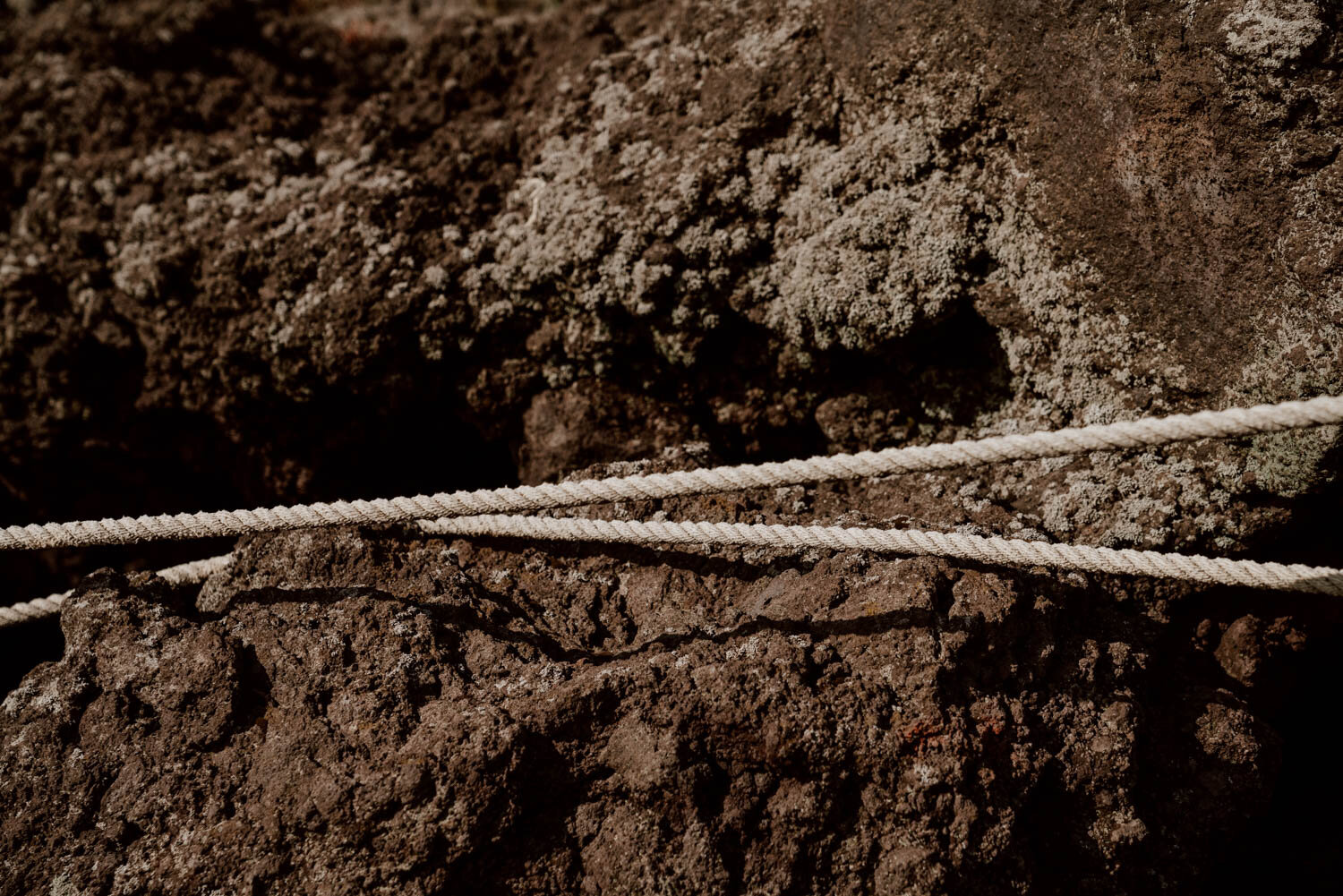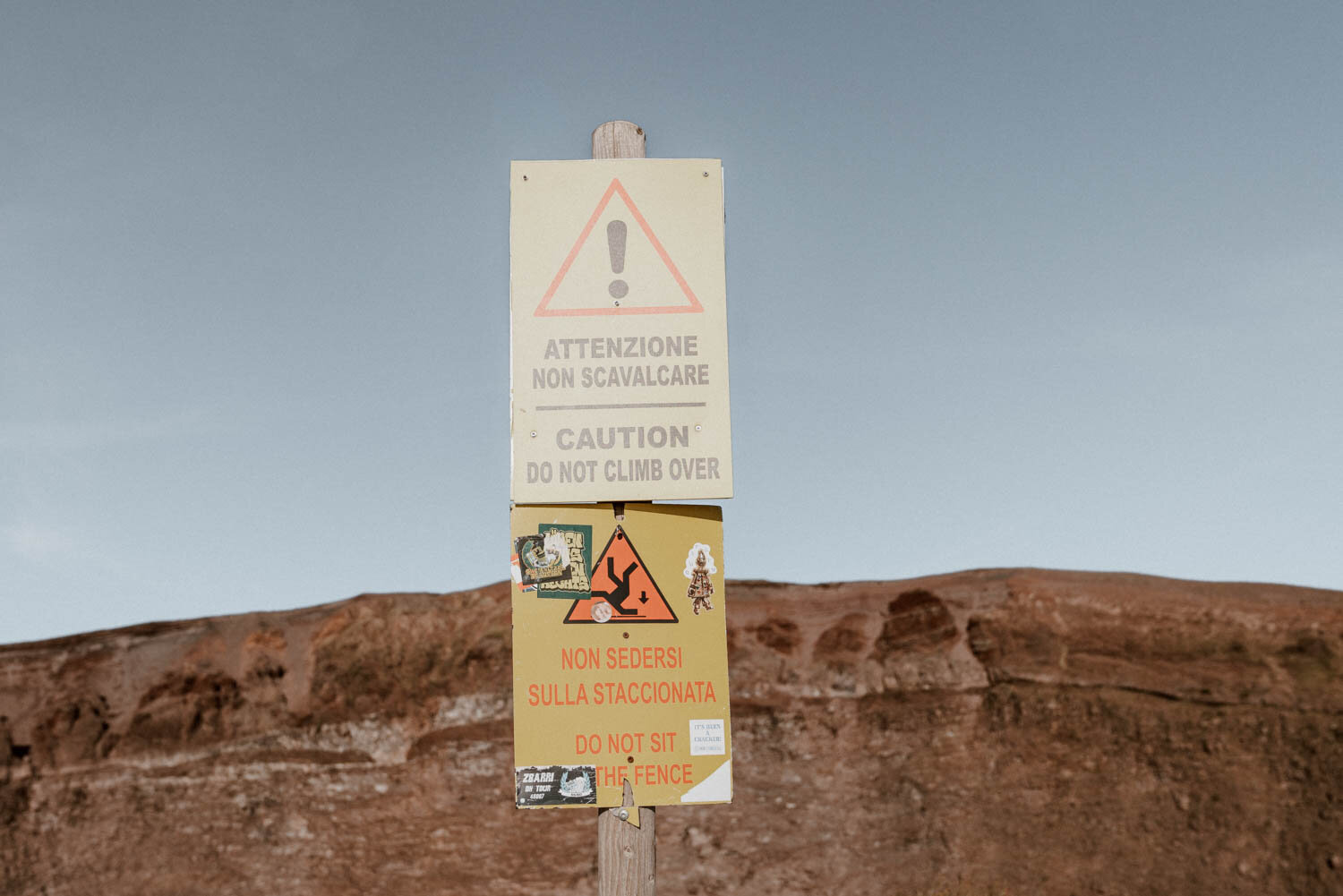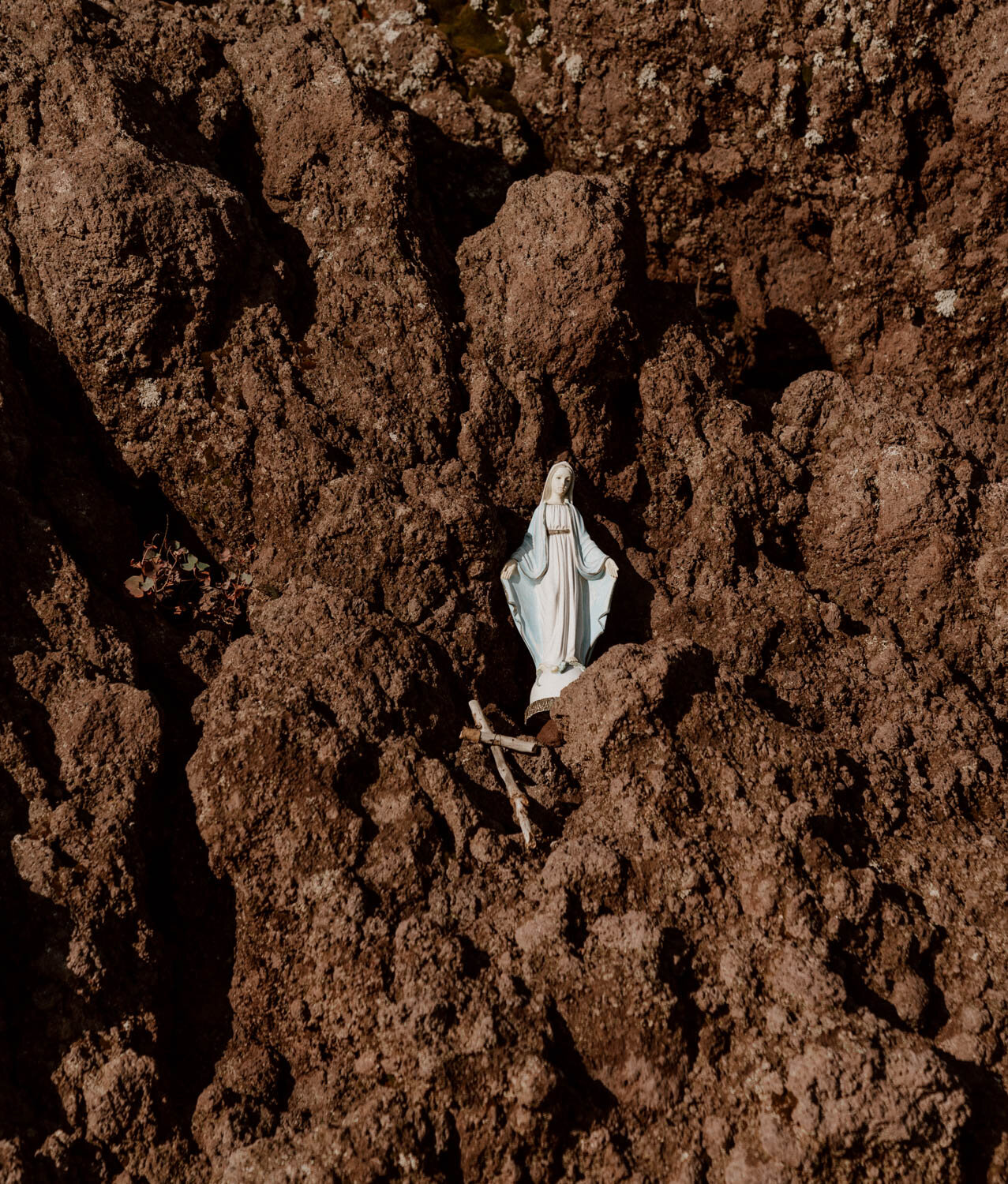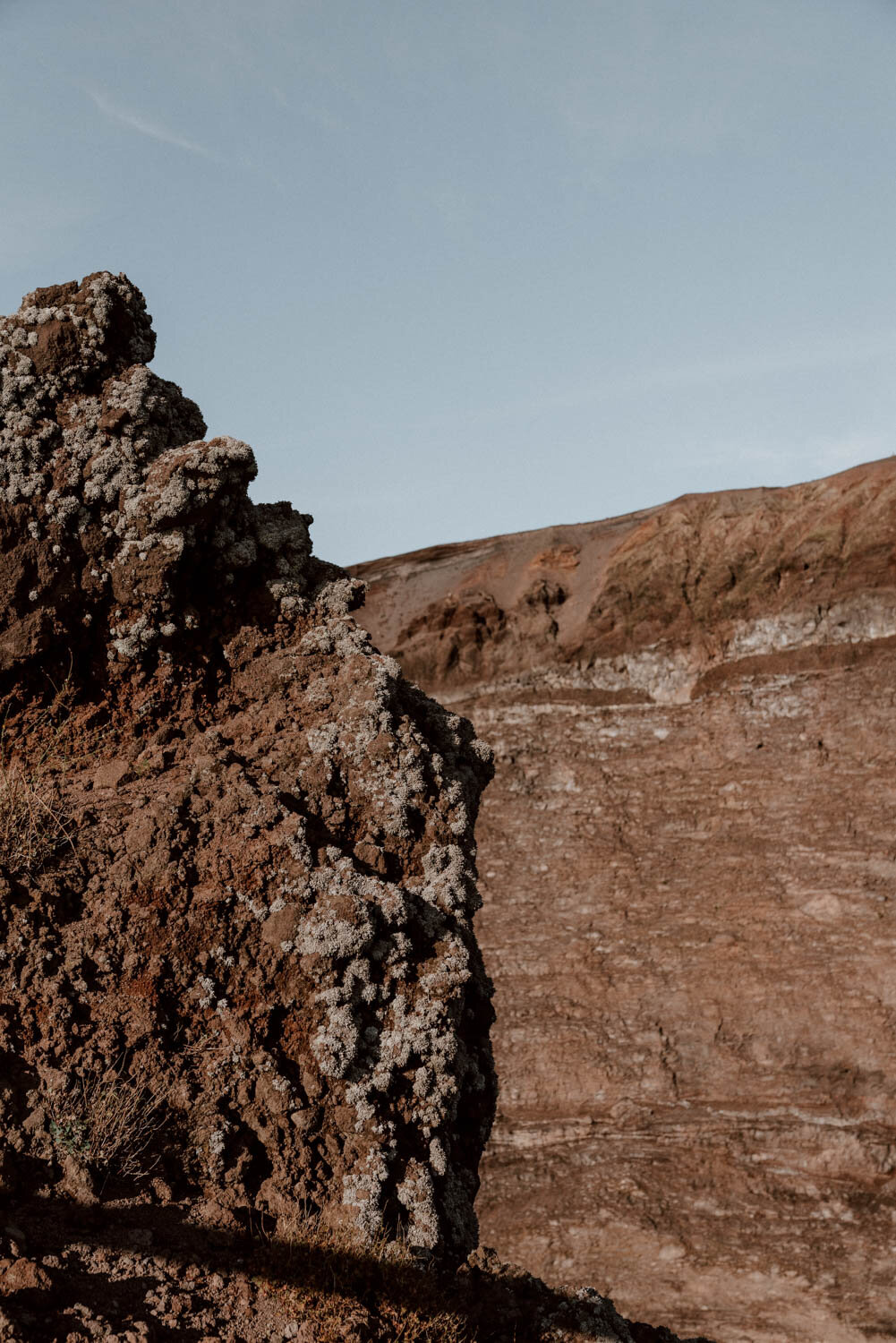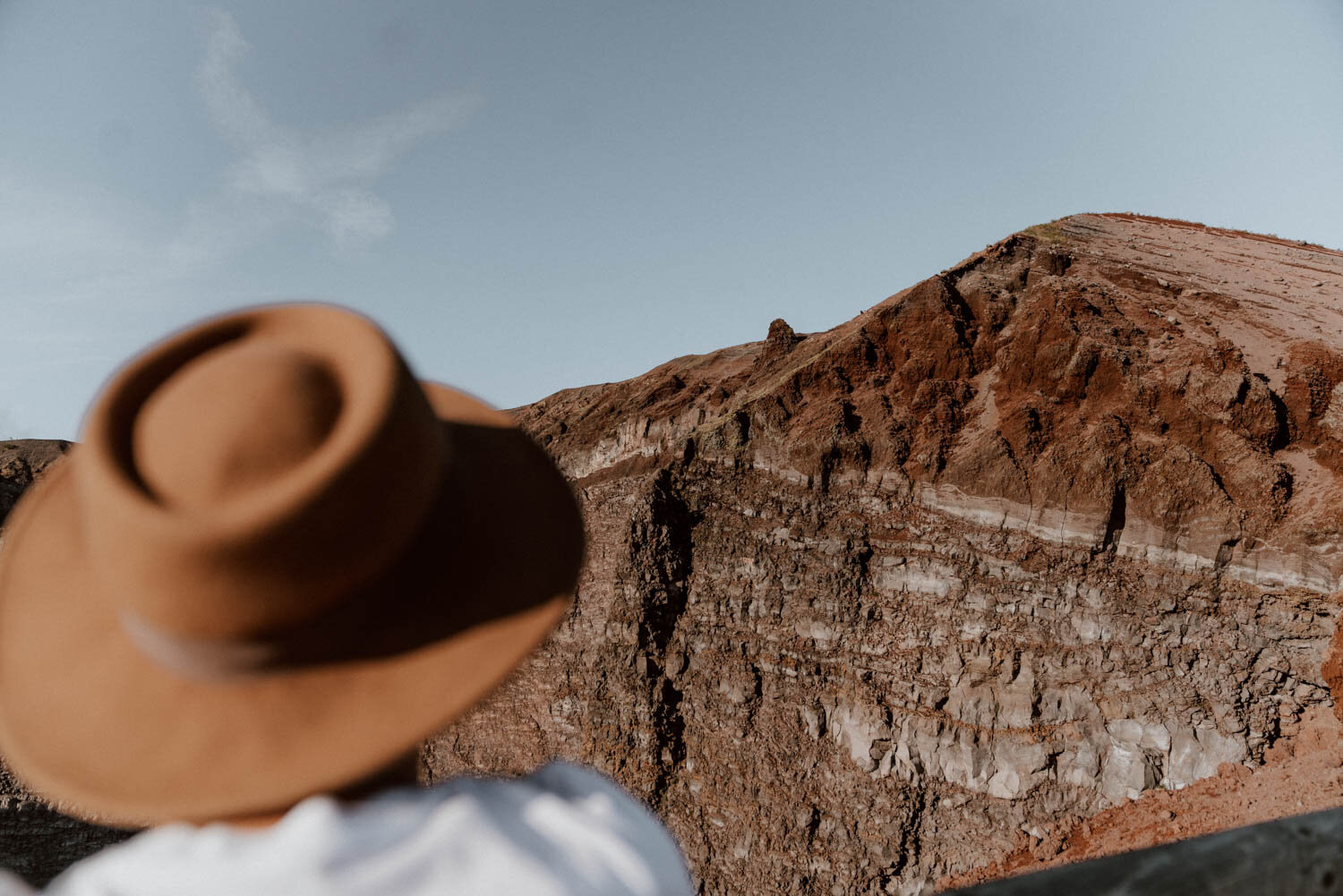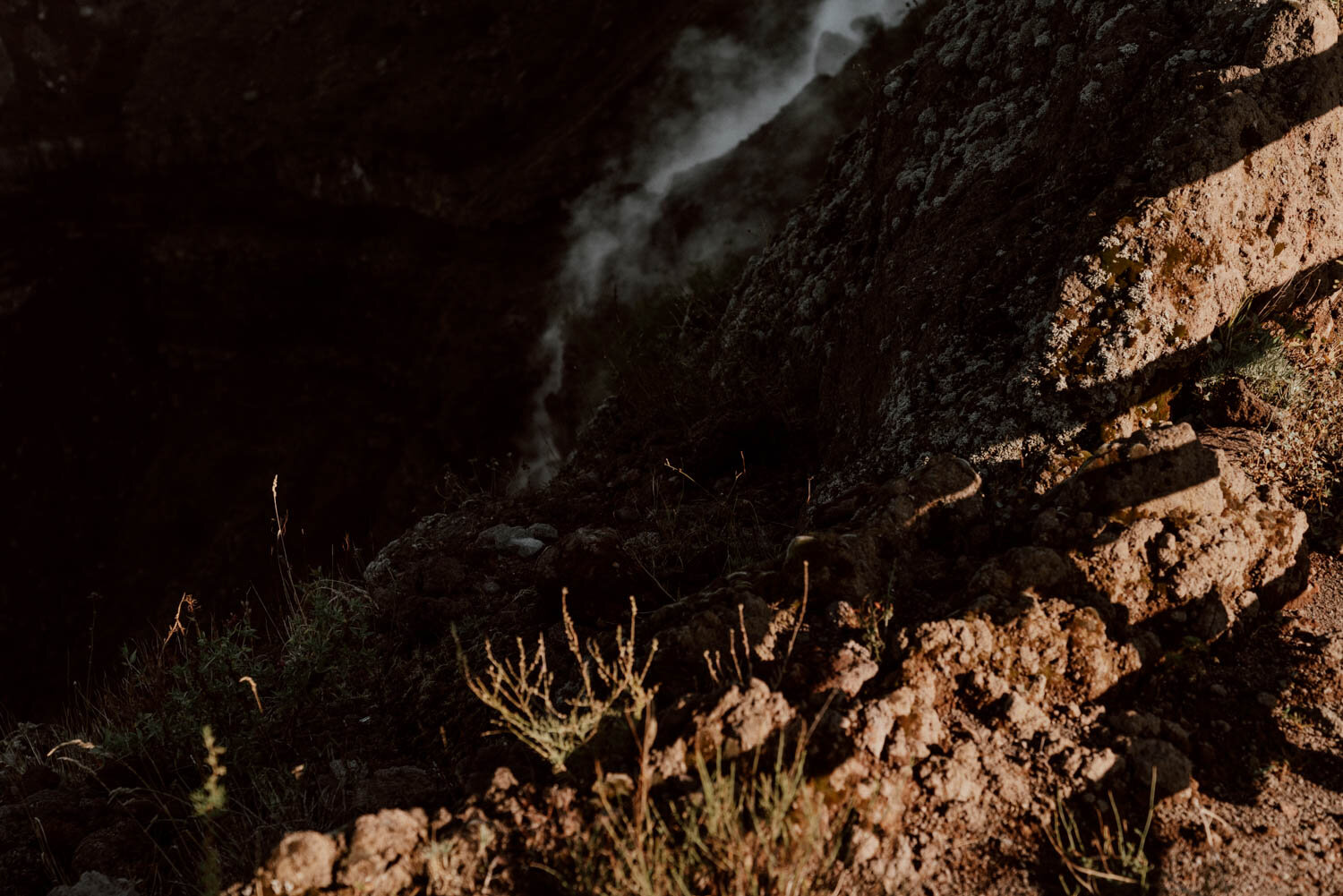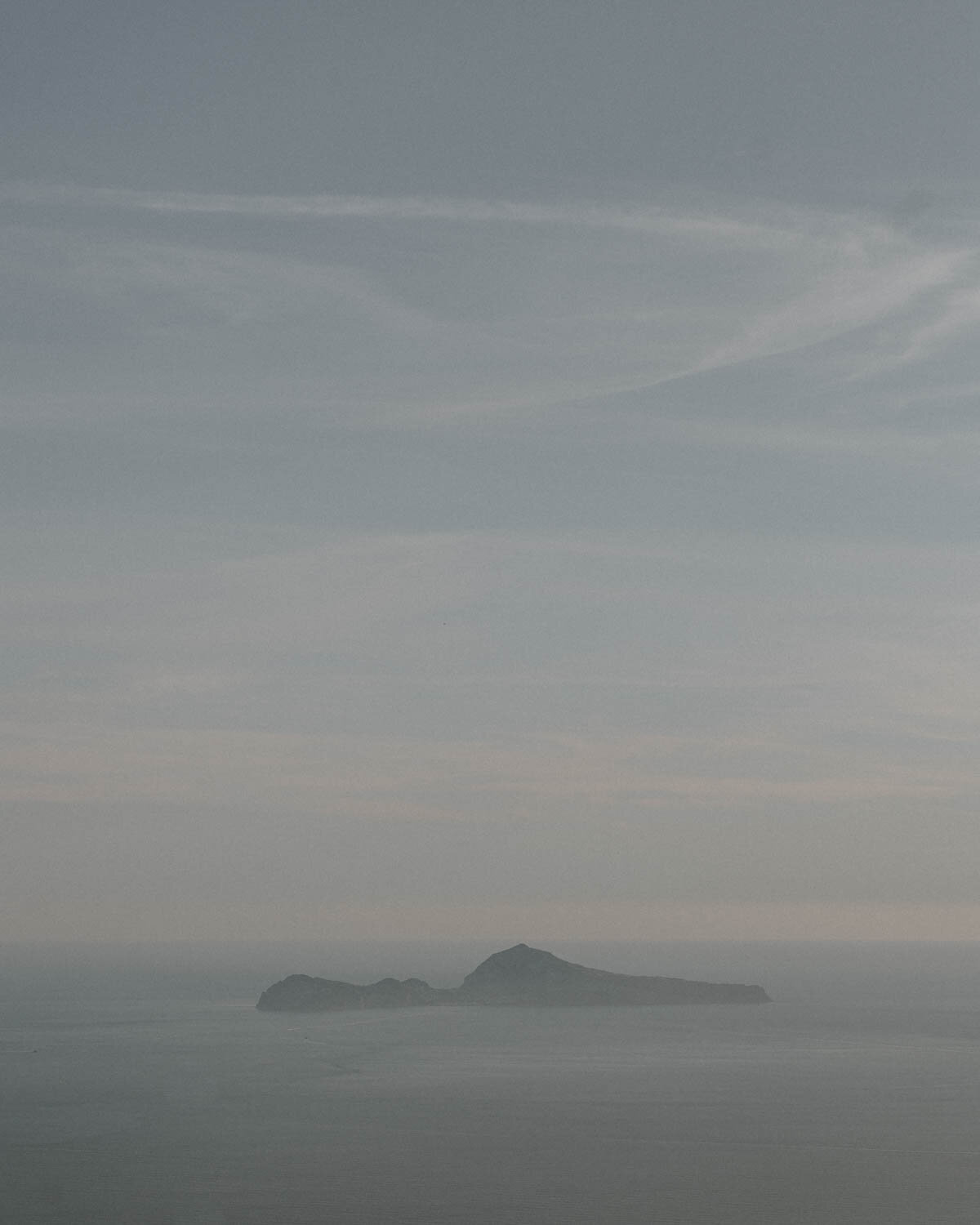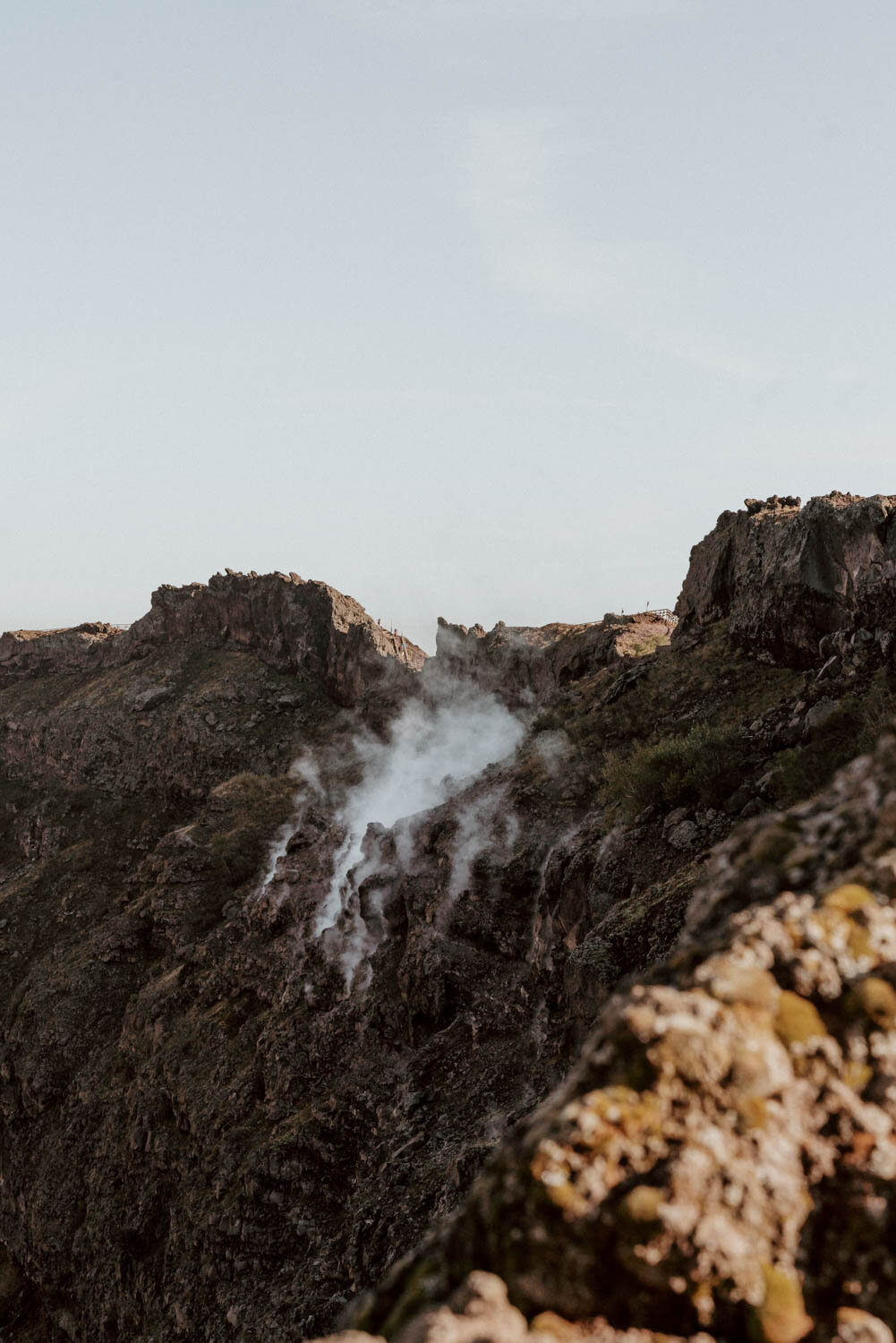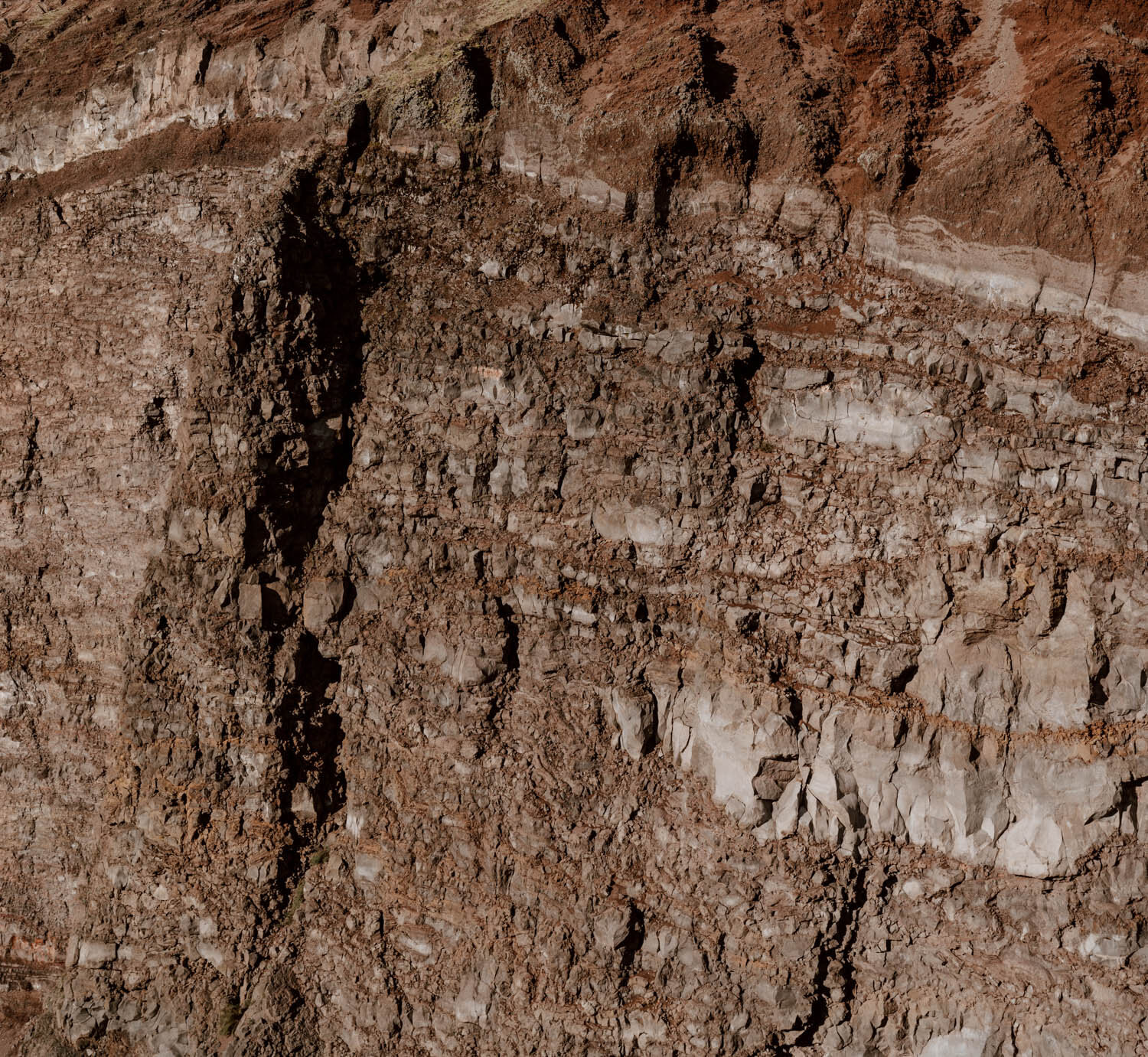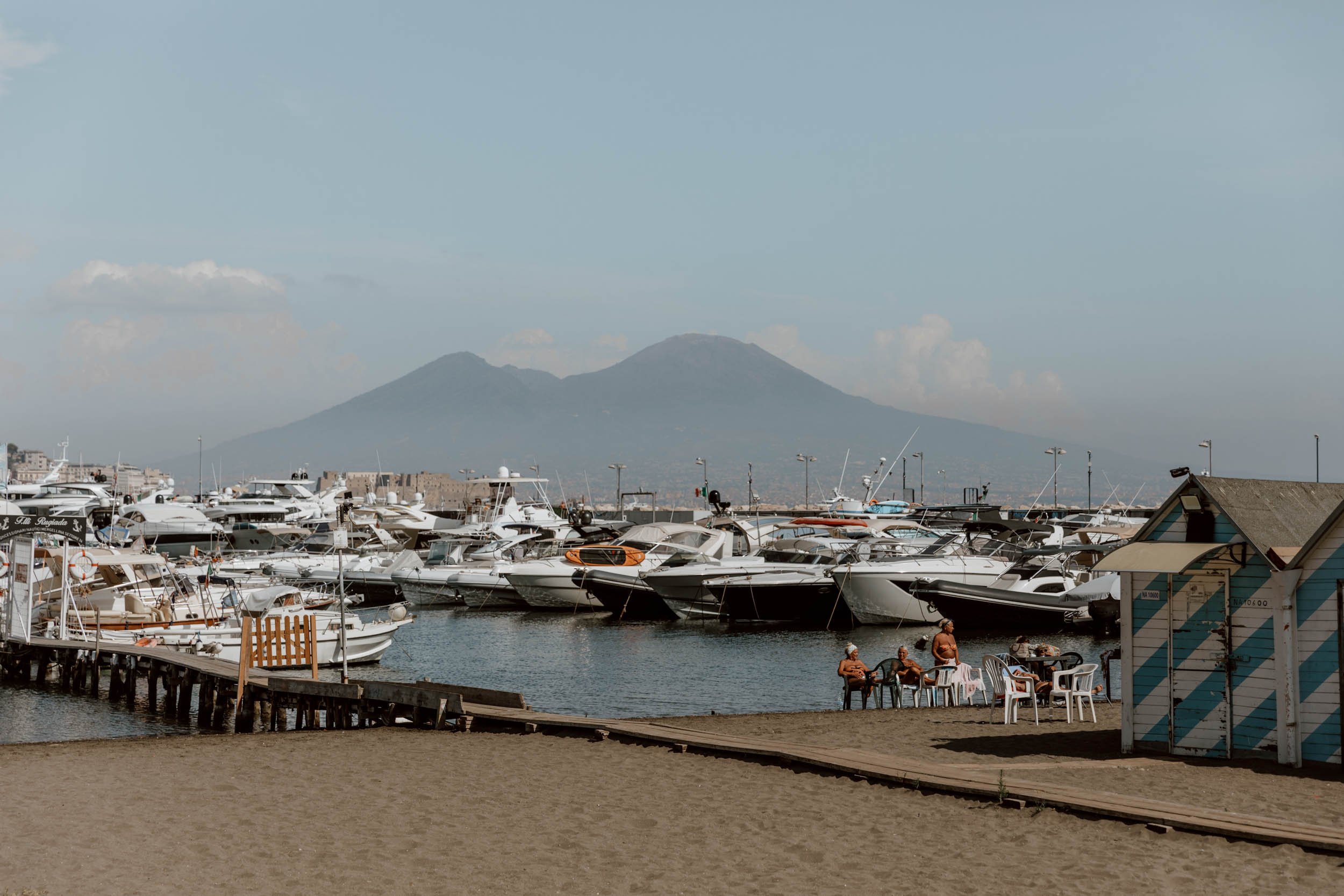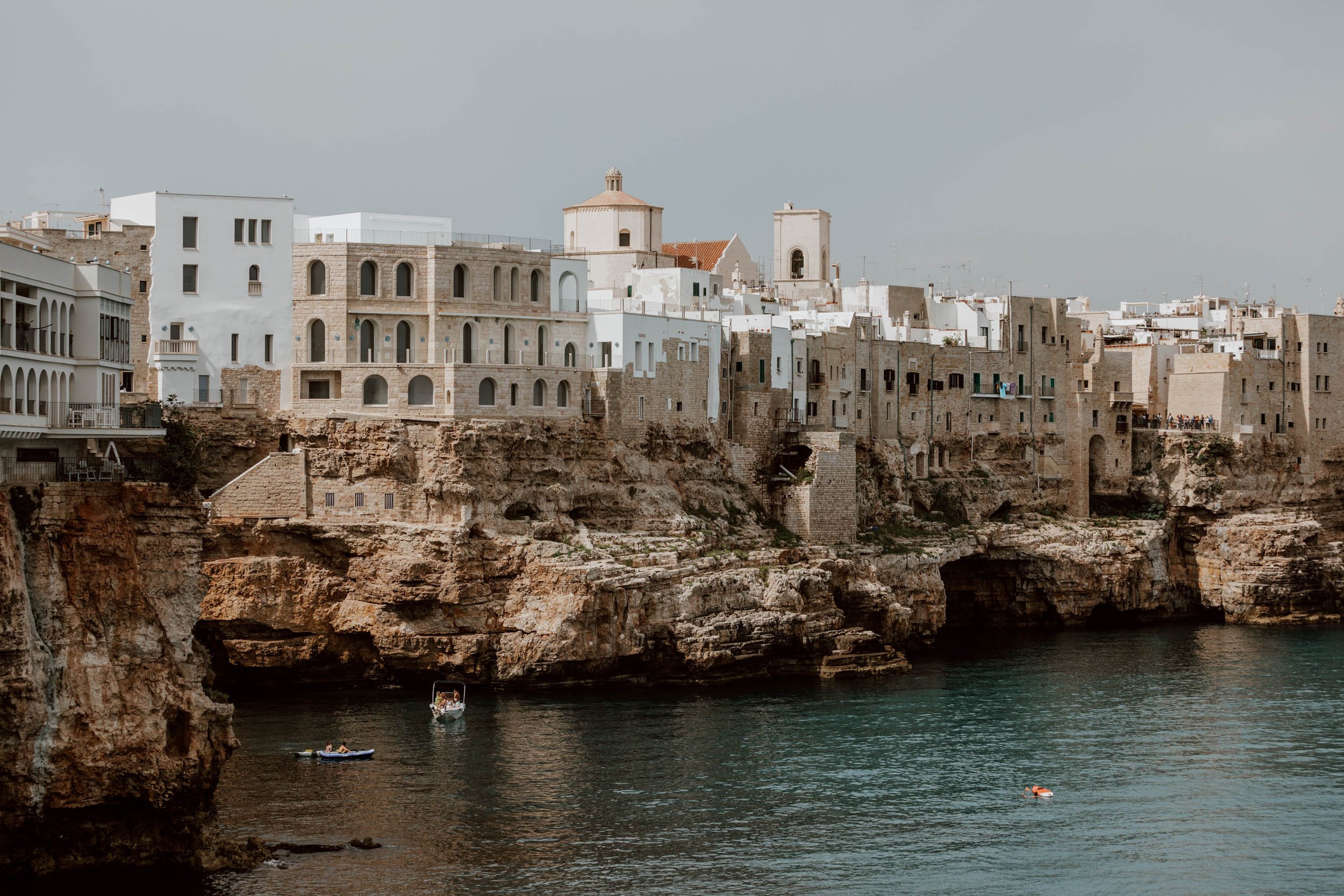Hiking to the top of Mount Vesuvius is an iconic experience - in this guide you’ll find everything you need to know to plan your visit.
Updated April 2024
Mount Vesuvius towers over the Gulf of Naples, a looming presence visible for miles that has silently existed alongside its Neapolitan neighbours for the best part of 4,000 years.
No one knows when she will awake, the only certainty is that one day, she will.
Again.
Staring down into the vast caldera of Mount Vesuvio, it is difficult to imagine the lives cut short and family lines permanently altered by its violent eruptions of old. Indeed, were it not for the wisps of hot steam escaping from fumaroles beyond the barrier, one could easily believe that this was a volcano dead rather than sleeping.
For those living at her base in 79 AD - and during the 700 years of dormancy before it - we imagine there must have been a similar sense of ease; a risk that was barely a risk in order to have a pleasant and prosperous life in the Roman towns, cities and settlements of Herculaneum, Oplontis, Pompeii, and Stabiae.
When she awoke, everything went black, as a superheated hurricane force wind carrying ash and rock, burnt, suffocated or poisoned any living creature in its path. 16,000 people perished, and those towns cities and settlements were buried for centuries to come.
//
We’ve always struggled with the notion that this long silent volcano is considered one of the world’s most dangerous - or even Italy’s - when the likes of Etna and Stromboli remain so active. However, standing atop the crater’s rim, staring out across the modern towns, villages and vast metropolis of Naples below, it becomes abundantly clear just how many lives and livelihoods stand between Vesuvius and the sea; how many lives would be lost when that next eruption arrives.
Only Neapolitans, with their battle-scared way of life, and ‘live for the moment’ mentality could live alongside a sleeping giant that may one day destroy it all - as long as that day, isn’t today.
//
For visitors to Naples or the Amalfi Coast, an early morning or afternoon spent hiking Mount Vesuvius (Vesuvio in Italian) should be an essential part of your itinerary, and is an ideal accompaniment to day trip to the ruins of Pompeii or Herculaneum.
Within this guide you’ll find all the essentials to plan your visit to Vesuvius, including how to get there, whether you need a tour (and our pick of the best), information on the hike itself, how to pair it with the ruins, and even some recommendations for other treks within the national park.
Here is our complete guide to hiking Mount Vesuvius.
the Vesuvius essentials
Start / Easily accessible from Naples (train and shuttle bus).
Plan / Combine with day trip to Pompeii or Herculaneum
Tickets / Buy in advance - skip the line tickets available here
Transport / Buy combo shuttle transport & ticket here
Trail / Hike only 20 minutes, but steep + dusty at 1,281m
Pick / Several trail options to choose from
Wear / Trainers are fine, boots not required
A Complete Guide to Visiting and Hiking Mount Vesuvius
How To Get To Mount Vesuvius
Train & Shuttle Bus From Naples
Accessing Mount Vesuvius from Naples requires a short train ride on the EAV Circumvesuviana to Ercolano, followed by a tourist shuttle bus.
To begin your day you’ll need to make your way to Napoli Piazza Garibaldi (Google Maps), which is a separate station within the same building as Napoli Centrale Train Station.
You want to take the EAV Circumvesuviana line; when purchasing your ticket, ask for ‘Ercolano Scavi’.
It's €2.80 per person one-way (cash is definitely preferred but card payment is possible), and travel time is around 20 minutes. A one-way ticket is fine, but it’s best to arrive before 9am.
Do note that as this is not a TrenItalia train service, you will not find tickets online or on their website. There are no seat reservations.
Once tickets are purchased, pass through the barriers and go downstairs to the platforms. There are screens with departures/arrivals information, and just make certain that you get on the train with ‘Torre Anunziata’ or 'Sorrento' as its final destination, as there will be other Circumvesuviana lines passing through.
The first Circumvesuviana departure leaves Napoli Garibaldi at 5.57 am, with approximately two trains an hour. We recommend checking current schedules here - click 'Orario Treni' then select ‘Napoli-Torre Anunziata’ and ‘Napoli-Sorrento'. Note that the former has more departures per day than the latter for Ercolano, whilst 'DD' on the schedule denotes the more expensive Campania Express tourist train service (€15 one-way).
Note that Ercolano Scavi is also the stop for visiting Herculaneum, which is why those two are also a good combination on a single day trip. We’ve shared more information on transport to Ercolano and how to do combine them in this post: How To Get To Herculaneum From Naples
Disembark at Ercolano Scavi station, and make your way to the Vesuvio Express office (located on the left, just outside the station) from which you can buy your shuttle tickets if you haven’t already purchased them online.
Return tickets cost €10 per person, although you can include your entry ticket to Vesuvius within the same ticket. In this case, the cost is €20 per person, and you can also buy this combo ticket in advance here.
The first shuttle leaves at 10am, the last at 4pm. Departures are supposed to be every hour, however it’s important to be aware that although there is a timetable, the company doesn’t always strictly adhere to it and will likely wait for the bus to fill up before heading to off.
You are expected to be back at the bus two hours after being dropped off at the entrance however, providing there are empty seats, you can actually take any descending shuttle run by the company.
Bus From Naples
There is a variety of information online about a bus that runs directly from Naples to Vesuvius, leaving from the Capolinea Mergellina bus stop, not far from the cruise terminal at 9.10 am and 10.25 am (€7.30 return, takes 1 hour and 20 minutes). However, it is unclear whether this service still runs .
Should you successfully manage to take it, we’d love to hear from you in the comments so we can update this post in the affirmative.
From Herculaneum
As Ercolano Scavi is also the train station for visiting Herculaneum, it’s easy to pair the ‘Other Pompeii’ with a morning or afternoon up Vesuvius.
For some travellers, the smaller Roman site may offer a better companion to the volcano than the more famous Pompeii as it is less crowded and only requires 2-3 hours.
We’ve shared all the details in this post: 11 Things To Know Before Visiting Herculaneum
From Pompeii
Likely aware it makes little sense to see the destroyed city, yet neglect the responsible volcano just down the road, the vast majority of people who visit Mount Vesuvius, do so in combination with a few hours in Pompeii; this is in fact what we did.
For independent travellers, there are two options for getting between the two:
// The public bus service (cheaper, but less regular)
// The private Vesuvio Express bus (more expensive, more frequent)
We have put together an entire post on how to visit the two sites in one day independently, so we’d recommend checking that out for full details: How to Visit Pompeii and Vesuvius in One Day
The Tour Option
Whilst we were very happy to visit Vesuvius - and Pompeii - independently, we appreciate that some people prefer the ease of joining organised tours and not having to battle with public transport, especially when required to move between two sites.
If this sounds like you, we recommend this highly-rated full-day tour which combines entry to both sites, pick-up and drop-off in Naples, lunch, and an an English-speaking guide to bring the history and stories to life.
Alternatively, if you’d prefer to just visit Vesuvius, consider this excellent half day guided tour from Naples, which includes skip-the-line tickets and lunch.
By Car
Reaching Vesuvius by car is relatively easy; the only issue is the relatively limited parking.
It costs €5 per car, and you can find the carpark here (it is well signposted). Once the carpark is full, people tend to park on the side of the road that leads up to the volcano. This is free, but do note that you do so at your own risk.
Do note the official parking area is located 1.5 km from the ticket office - you can either walk or take the small shuttle bus which costs €1 per person.
The road up here is steep and winding, filled with blind corners and hairpin bends. Be extra cautious on the drive up and down, especially if a big tour or public bus is coming toward you…
Vesuvius Tickets & Costs
You were previously able to buy tickets at the gate, but changes brought in due to the pandemic have made booking tickets online for a specific timeslot mandatory. During our visit in early October, we were able to buy our tickets on the same day however should you be visiting during high season we’d highly recommend booking your slot as far in advance as possible to guarantee your desired time.
You can buy standalone entry tickets for Vesuvius via the official website here, or alternatively, combine your entry ticket with a 90-minute guided tour for only a slight price increase.
Tickets cost €11.68 per person, and concessions are available.
Keep Reading // If you’re busy planning your itinerary, be sure to take a look at our complete guide to the best day trips from Naples.
The Hike Up to Vesuvius (The Gran Cono Trail)
Distance | 4 km
Time | Approx 2 hours
Elevation gain | 175 m
Effort | Easy
In the grand scheme of volcano hikes (of which we’ve now done several), the hike up Mount Vesuvius is pretty easy. We’d actually call it much more of a walk than a hike.
Beginning from the ticket gates, you’ll soon pass a small stall selling drinks and snacks etc, as well as some public toilets, before continuing on to a gravelly path of switchbacks.
This section up until the volcano rim is the harder part of the hike. It’s only 800m in distance, but you’ll gain a little bit of elevation meaning that you’ll definitely feel it in your legs! If you’re of relatively decent fitness, you should be able to manage it without too much difficulty.
After 20-30 minutes, you’ll reach a small souvenir shop on your left, with a guide office next door (from which you can wait for a small organised tour - more on that later).
The remainder of the hike is much, much easier with only marginal up and downs. Quite aside from that, you’ll mostly be distracted by the spectacular views out over the Bay of Naples to your right, and the caldera (volcanic crater) to your left.
Do note that this isn’t a loop hike so much, and you are unable to walk around the entire volcanic rim. Instead, you will walk a further kilometre or so until you reach a small bar/cafe selling drinks etc at a viewpoint and then turn around and head back.
How Long Do You Need to Climb and Explore Mount Vesuvius?
From the moment we got dropped off at the entrance, until we returned to the bus to head back down, we spent around 1.5 hours at Mount Vesuvius. This included plenty of time to take photos, marvel at the crater and enjoy the views, as well as the short hike up and down.
For those that may struggle a little more making it to the top, you should allow two hours - although we appreciate that if you are on an organised tour or need to be on a specific shuttle bus back to Ercolano that you may be a little more time-limited.
One element that will likely affect everyone’s speed is the season you choose to travel to Vesuvius. Southern Italy has incredibly hot summers, and should you be attempting to visit the volcano during the middle of the day in June to September, even the fittest will not want to leg it up the side, for fear of passing out with heat exhaustion at the very top!
The Alternative Hiking Routes
From 2001 to 2003, the Vesuvius National Park created 11 new paths (covering a total length of 54 kilometres) to allow tourists to explore the area beyond the ‘Gran Cono’. We’ve shared a brief overview of each below - but the reality is that the majority of you will not walk these if you’re combining it with a trip before / after to the ruins of Pompeii.
Trail 1 | Across Valle Dell’Inferno
Beginning in the village of Ottaviano, this leads trail leads you through woods, scrubland and along the ancient caldera of Mount Somma, exposing you to areas most representative of the park’s flora, fauna and wildlife.
This 12km hike is considered difficult, and should take around 7 hours.
You can find more information on this hike here.
Trail 2 | Cognoli di Ottaviano (temporarily closed)
Also beginning in Ottaviano, this wild trail traces the eastern slope of Mount Somma, passing the ridges of the ancient volcano. Also offers spectacular views over the Bay of Naples.
The 11.5 km trail is considered difficult, and hikers should allow 8 hours to complete it.
You can find more information on this hike here.
Trail 3 | The Mount Somma (temporarily closed)
Beginning in Ercolano, this is a fascinating ring route which leads to Punta Nasone (the highest peak of Mount Somma), and past the lava flows of the the last big eruption in 1944.
Another trail considered to be difficult, this one stretches 9 km and will require around 5.5 hours to complete.
You can find more information on this hike here.
Trail 4 | Riserva Tirone
Said to offer the most spectacular views in the entire park, this trail beginning in Ercolano passes through the Tirone-Alto Vesuvio Forestry Reserve, and ends at Vesuvius.
A medium-difficulty trail of approx. 11 km. Allow 6 hours to complete it.
You can find more information on this hike here.
Trail 5 | Gran Cono
This is the trail the vast majority of us will compete - leading up to the cone of Vesuvius.
Trail 6 | Strada Marone (under maintenance)
Beginning and ending in Via Cefelli (in the village of Trecasse), this low-medium difficulty trail corresponds to the ancient road traced by the Matrone brothers to go back to the Gran Cono. The most panoramic trail in the park, it has great views the entire way.
At 14 kms, it’s a long trail so allow 7 hours to complete.
You can find more information on this hike here.
Trail 7 | Il Vallone della Profica
This trail winds along the slopes of the lesser known side of Mount Somma, through the cultivated fields where the typical pomodorini a piennolo (cherry tomatoes) are produced.
Beginning and ending at Via Profica Paliata in San Giusseppe Vesuviano, this moderately difficult trail is only 4.5 kms and should take no longer than 3 hours to complete.
You can find more information on this hike here.
Trail 8 | The Old Rack Train (closed for maintenance)
Stretching only 3 km, this easy-moderately difficult trail (beginning and ending in San Sebastiano al Vesuvio) follows the rails used by the rack train which once went from the station of Pugliano to the lower cable train station made famous by the song ‘Funiculì funiculà’.
You can find more information on this hike here.
Trail 9 | The Lava Flow
An easy little 1 km hike - suitable for children - which allows you to trace the lava flow of Vesuvius’ last eruption. The trail begins at Via Contrada Osservatorio (the Vesuvius Observatory).
You can find more information on this hike here.
Trail 10 | L’Olivella (Closed for maintenance)
This trail retraces the Olivella path, which climbs through the countryside of Sant'Anastasia, leading to springs.
Beginning and ending at Via dell'Ulivella in Sant'Anastasia, this is considered an easy walk of 3.7 km. Allow 2.5 hours to complete.
You can find more information on this hike here.
Trail 11 | Terzigno Pine Forest (Under maintenance)
The only wheelchair accessible trail in the park, this flat 1.5 km route passes through thick pine forests.
You can find more information on this hike here.
What to Wear and Bring
This is definitely not the sort of activity where you need to be kitted out in full-on expensive outdoor gear, however there are a couple of things that are going to make this ‘hike’ a little easier - and it’s all the preparation! That is, what you need to wear and what you bring.
As we were visiting Vesuvius as part of a much longer summer break we didn’t have our walking boots with us, so we wore running trainers. These were perfectly adequate but given the unstable, dusty surface that you’ll be walking upon, if you have something with a bit more ankle support, or at least a good grip, wearing them wouldn’t be the worst decision.
Whatever you do, do not wear flip flops! We didn’t personally encounter anyone in them, but have heard that it’s not uncommon.
What else you choose to wear will depend upon the time of year you visit. During the summer months, anything loose and cool is good, but be sure to also have a hat and plenty of water. Earlier or later in the year, you’ll need to be aware that it can get pretty chilly up at the top so having another layer in your bag is sensible (we actually had a reader who visited in March comment that it was very cold at the top, so do bear this in mind if travelling during winter / early spring)
Slap on the suncream too if it’s sunny.
Do You Need a Guide or a Tour?
Unlike Pompeii, where we feel that a guided tour absolutely would add to your experience, providing you’ve done a bit of research into the volcano in advance, Vesuvius is somewhere where you can very much go it alone.
Included within your ticket price, everybody has the opportunity to join a short 10-15 minute tour which departs at regular intervals from the guide shelter, next to the souvenir shop just as you arrive at the crater rim.
Simply take a seat and wait for the next one!
If you prefer having logistics and transport taking care of for you and a knowledgeable guide on hand to enrich your experience, we recommend taking a look at these two tours:
Pompeii & Vesuvius |This highly rated full-day tour combines entry to both sites, pick-up and drop-off in Naples, lunch, and an an English-speaking guide to bring the history and stories to life.
Vesuvius Only | Consider this excellent half day guided tour which includes transport, skip-the-line tickets, English-speaking guide and lunch.
As we discussed earlier, if you have your own transport or travel on the bus, there’s also the opportunity to combine your entry ticket with a 90-minute guided tour of Vesuvius - this option has great reviews.
Is it Safe to Hike Mount Vesuvius?
Climbing Vesuvius is a pretty standard touristic activity in Italy, and providing you’re in relatively good shape and heed the warning signs, you stand more chance of being hit by a swerving moped on the streets of Naples that anything bad happening atop the volcano.
Indeed, a 2017 study of volcano-related deaths over the last 500 years found that on average, just one tourist, climber, camper, student, pilgrim or park warden died atop a volcano - the simple fact is that the vast majority of deaths in and around these often sleeping monsters occur amongst people that live within the area, not visitors to it.
With that said however, despite its years of relative silence, Vesuvius is still considered one of the most dangerous volcanoes in the world; it is not a case of if it erupts again, more so when. One only needs to read reports on the devastating volcanic eruption at White Island, New Zealand to appreciate how tragic such unforeseen disasters can be.
Want to know the craziest volcano hike we’ve done though? Read this post about Volcan Acatenango in Guatemala





